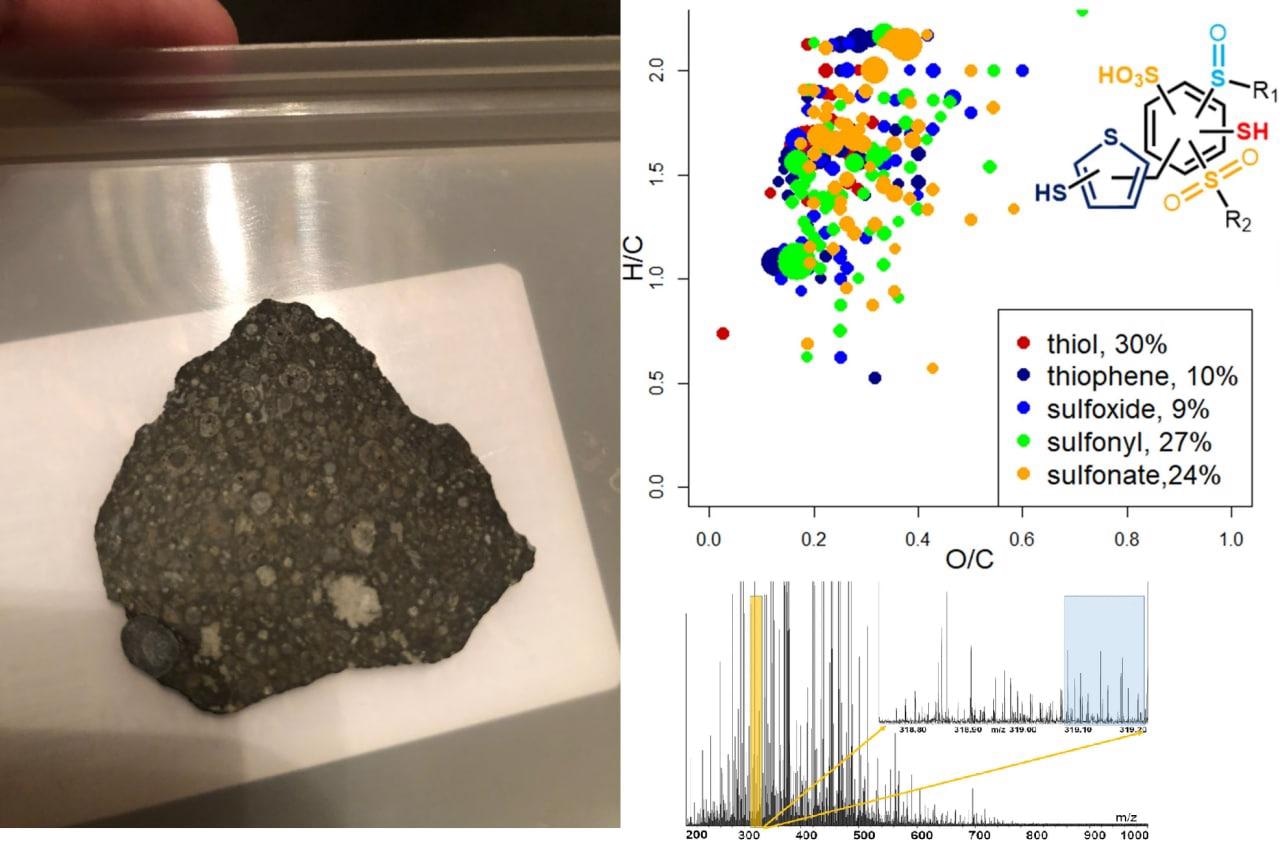Apr 6 2021
In an effort to find the origin of carbonaceous chondrites—the insoluble organic matter constituting the Murchison and Allende meteorites—researchers from Russia and Germany investigated their molecular composition.
 Сarbonaceous chondrite and its sulfur chemistry. Image Credit: Skoltech.
Сarbonaceous chondrite and its sulfur chemistry. Image Credit: Skoltech.
Using ultra-high resolution mass spectrometry, the team unraveled an extensive diversity of chemical compositions and unpredicted similarities between meteorites from various groups. The study has been published in the journal Scientific Reports.
Carbonaceous chondrites are made of almost the whole spectrum of organic molecules found on Earth, such as nucleic acids that could have had a crucial role in the evolution of life.
Most of the modern meteorites are almost of the same age as the Earth, and thus their composition should also be similar to that of meteorites which bombarded the surface of Earth in ancient times. Quite similar to comets, they can be regarded as a source of organic compounds that most possibly formed the core of the Earth’s biosphere.
“The geological history of the Earth is a continuous process that involves division and transformation (biological or otherwise) of the Solar System’s primary matter. What remains of that matter ends up on Earth in the form of chondrites.” Stated Alexander Zherebker, a Senior Research Scientist at Skoltech.
However, two centuries of research on the organic matter of meteorites fall short of a full picture of its molecular composition: for instance, there is no systematic data on insoluble organic matter of meteorites which may account for up to 70% of all organic carbon in the samples. Presumably, these substances have much higher molecular complexity than suggested by research focusing on particular classes of organic compounds.
Alexander Zherebker, Senior Research Scientist, Skoltech
Researchers from Skoltech, Moscow State University, Vernadsky Institute of Geochemistry and Analytical Chemistry of RAS, and the Rostock Institute (Germany) employed ultra-high resolution mass spectrometry techniques to investigate the composition of meteorites.
The Skoltech group included scientists from the Mass Spectrometry Laboratory at the Skoltech Center for Computational and Data-Intensive Science and Engineering (CDISE): Alexander Zherebker, Yury Kostyukevich, Alexey Kononikhin, and Oleg Kharybin.
The study was headed by Skoltech Professor Evgeny Nikolaev, Corresponding Member of RAS, Doctor of Physics and Mathematics, Head of the Mass Spectrometry Laboratory.
The researchers found a fascinating molecular diversity in the insoluble organic matter of carbonaceous chondrites.
“Considering that meteorites and the Earth are of similar age, we can argue that the organic matter of carbonaceous chondrites could have been the source of chemical compounds which served as building blocks for biological molecules and life on Earth,” noted Alexander Zherebker.
However, meteorite composition has nothing to do with living matter, which is evidenced, for example, by totally different oxidative profiles of extraterrestrial organic matter and a similar fraction of coal of biological origin. That is to say, meteorites showed no signs of ‘selection’ of compounds.
Alexander Zherebker, Senior Research Scientist, Skoltech
An analysis of carbonaceous chondrite extracts using isotopic exchange mass spectrometry demonstrated the existence of sulfur-containing compounds with all viable oxidation states ranging from −2 to +6, which was not at all associated with the thermal history of the sample, as considered earlier.
Examination of the Murchison and Allende samples confirmed that the relative content of these compounds was the only difference.
The findings of the researchers indicate that the precursors that led to the development of various celestial bodies generated similar organic matter, which later changed in different ways, based on the environment and its different effects.
Journal Reference:
Zherebker, A., et al. (2021) Speciation of organosulfur compounds in carbonaceous chondrites. Scientific Reports. doi.org/10.1038/s41598-021-86576-6.